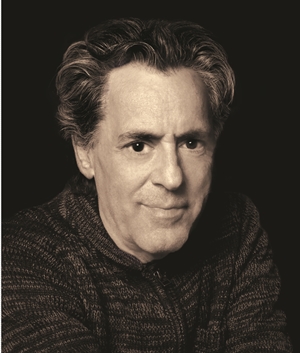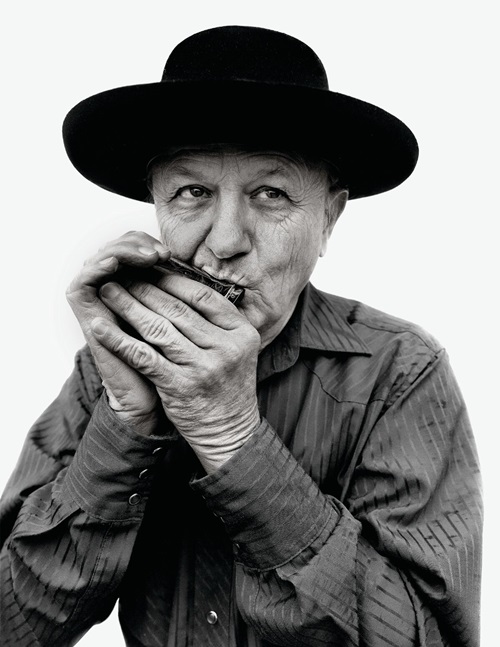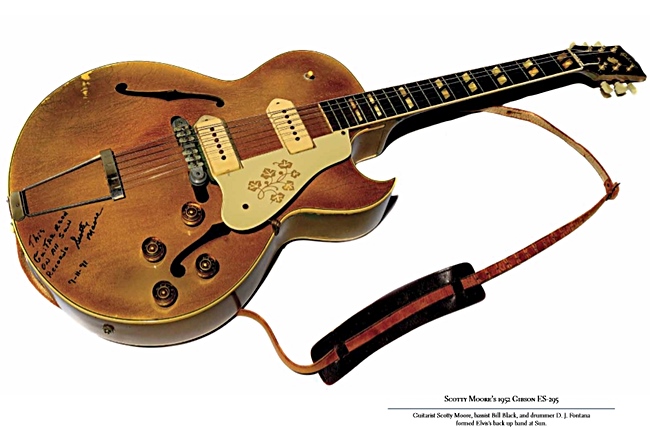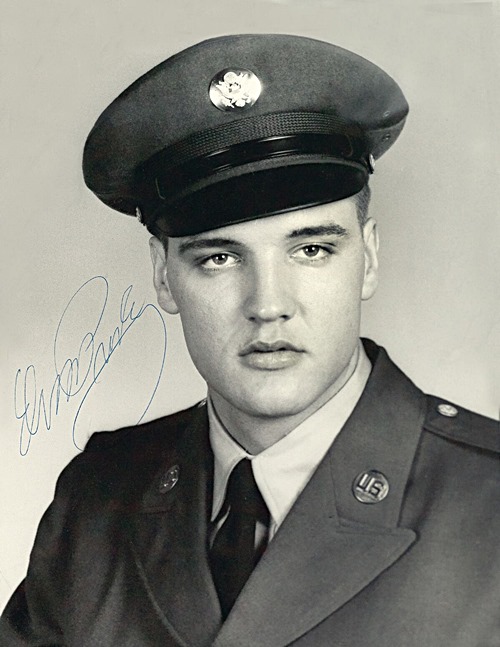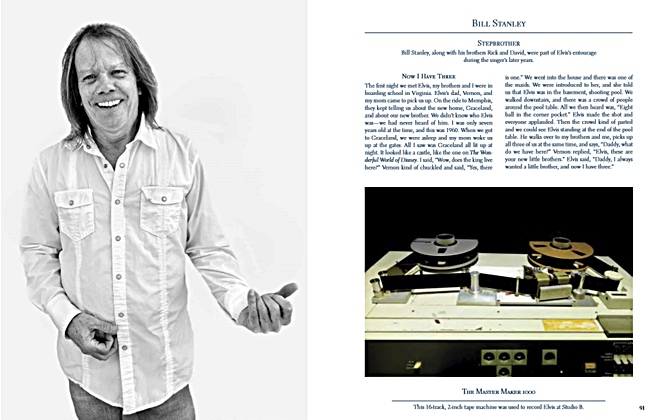 |
 |

All images in this review - From Blue Suede Shoes by Thom Gilbert, copyright © 2017; published by Glitterati Incorporated www.GlitteratiIncorporated.com
The Interview Thom Gilbert (in New York) spoke to EIN's Nigel Patterson (in Canberra, Australia) by phone on 19 August 2017 ............................................................................ About Thom Gilbert and photography: EIN: Who is Thom Gilbert and how did you become involved in photography? TG: I am from New York, I was born in Long Island and grew up here. I wasn't really involved with photography until I got to Summer Camp. Initially I was interested in how this magical thing happens, the process that happens on a film and then on a print. I found that when I was taking a picture - it was magic. And for a kid my age, maybe 8 or 9 years old it was even more magical . They had a shack at the camp and you could go in and....I remember there were a lot of bumble bees, but I stayed well clear....I learned how to develop a film into a print and it was incredible. When I got home my father helped me build a dark room and my best friend and I became the official photographers for the yearbook at school. As I was got a little bit older I started going to some really premiere concerts in New York City where they would have an early show and a late show. The early show was start around 7 and the late show which might include a group like the Grateful Dead would play from like 11 to 4.30 in the morning. And you could take your camera, if you had a camera, and go right up to the stage and take pictures. And this really got me interested in the personal experience of using the camera and who I'm shooting - what Henri Cartier-Bresson called the "decisive moment". And that is the moment when you capture a person at the perfect time that tells their story perfectly. I also played drums for many years and thought that I could be a musician, I could be on stage, I'm good - in fact I played professionally for several years. Anyway, when it came time to go to college my father said "Ok what's it going to be? Do you want to go to arts school for photography or music school for drums?" And I thought well I've taught myself drums so why not go to Arts School and learn photography. And I did. I went to Tufts University in Boston, Massachusetts where I studied as part of its Fine Art program. I then spent maybe five years playing drums professionally until one day I realised I needed to go back to photography and make a living. So I became a fashion photographer for many years and was quite successful at it doing really big accounts and travelling the world. Anyway after about 20 years of being a fashion photographer and having lots of people around me like arts directors, make-up artists, stylists and clients I realised what I was doing was art but it was art that was very perishable. What I mean is that it was that model or that fashion one day and the next day that model or that fashion was out the window, it was passe. I wasn't getting a real tactile sensation, something I could feel about my photography, something I could build on as a legacy. And someone suggested to me on a job in Alaska that I should come there and photograph the native people who were really incredible. They were hunters and fishermen whose skills were handed down from from generation to generation and their work and lifestyle portrayed a unique culture.
EIN:Who has influenced you as a photographer? TG: One of the photographers I am influenced by is Richard Avedon. He did a series called In The American West where he went around and photographed different people against a white background. The effect was that it really isolated each person without any props or location images which would allow your eye to meander. He really only had that person and that person only had themself. And that really has been the essence of what I've been doing for about seven years now. I started out with what I call the Iconic Americans which are the people who stayed with their professions in a very passionate way, regardless of the human condition. So they've passed on their professions, their skills for many hundreds of years sometimes, to the next generation and there is an incredible synergy between their families and what they do. They're not really interested in fame or fortune, they are interested in survival and honest survival. I shot the Native Americans in Alaska. I also visited Texas which is rich in oil fields, cowboys, indians and so on. And I shot them all in their natural habitat. I have also shot musicians and again I found it wasn't about fame or fortune, it was about honing their skills, being behind an art form rather than record companies telling them what to do. EIN: One of your primary interests has been music both as a musician and in photographing music and its culture. Please tell us about this. TG: I grew up in a family very much into the arts and music. But actually, regarding my work, what I'd been doing with my photography branched off into a couple of different projects. I wanted to stay with particular subject matters for a length of time, a year, maybe a year and a half or even two years. I wanted to make sure I'd covered all aspects and actually published a book from it. And usually it's about lost history, things that have happened and many, many people have been influenced by it. Anyway a friend of mine had told me about Paul Rogers from Bad Company putting out an album recorded in an old studio that Al Green recorded his hits at in Memphis. And Paul was using all of the 60s and 70s musicians who had worked at Royal Studios when it wbecame famous in the 60s. So I went to Royal Studios to meet and film these session musicians who were such an important part of the Memphis soul sound. And I photographed musicians who were famous like B.B. King and others that people wouldn't even know about but who were the musicians behind the hits. And (laughs) that branched out into me photographing virtually every musician who was there at the time, like B.B. King, Carla Thomas, Bobby Bland and Sam and Dave - I got Sam because Dave's no longer with us. And also photographing artefacts from the time like Albert King's guitar. But I shoot them in a way that's more of a portrait rather than just illustration. Against the white backdrop it pops out so much detail about the subject, in fact so much that it makes you feel as though you're right there. That work resulted in my book, Soul: Memphis' Original Sound. And Stax Records in Memphis then displayed my work for a year.
All Images from Blue Suede Shoes by Thom Gilbert, copyright © 2017;
About Blue Suede Shoes: The Culture of Elvis: EIN: Thom, how did your new book Blue Suede Shoes: The Culture of Elvis come about?
TG: Well, Soul: Memphis' Original Sound was my first endeavour into photographing 'music' and what happened was I was right in the middle of Memphis and of course that's where Elvis is from. And I was photographing musicians who not only worked for Royal Studios and Stax but also crossed-over and did recordings with Elvis and there were also producers who had worked with Elvis. So there was this huge snowball effect where I started photographing Elvis' relatives, his best friends, film co-stars and his security guards, the Memphis Mafia. And the incredible thing was I was not only able to photograph them but I was also able to get really great stories from them, be it from Elvis' first girl friend or his three step-brothers telling me the story of the first time they came to Graceland. It was in the middle of the night and they said to Vernon Presley their step-father, that Graceland looked like the Wonderful World of Disney, it looked like a castle. And one of the boys said "Does a King live here?" And Vernon replied "Er yeah.....there's a King". So there were some funny stories like that. But really my Elvis book came about because I was already shooting photographs for my soul music book and there were all these cross-over people who had really open arms to me since they already knew the validity of my work. EIN: The theme The Culture of Elvis - did you always have this as the concept of your book?
EIN: Actress Kim Novak provided the Foreword to the book. Not many people would be aware that she was Elvis' favorite actress in the 50s. Whose idea was it to have her provide the Foreword?
TG: It was totally mine. A friend of mine's mother in Arizona knew......(this is getting remote)......knew of the person who was teaching Kim Novak painting. That's one of her loves. And somehow through that whole thing someone mentioned her to me and it went from there. I always felt Elvis should be doing movies like Sinatra was doing. He could have been doing some really serious drama like Sinatra, who was doing movies like The Manchurian Candidate and The Man With The Golden Arm. Even movies like Oceans Eleven and on and on and on. I think Elvis really missed his call that way because I really thought he could do it. EIN: How did you secure Glitterati as the publisher? TG: The publisher for my first book Soul-Memphis' Original Sound is actually based in Italy. My Elvis book wasn't exactly something that would fit their catalog of subject matter. However the distributor for my first book introduced me to the Glitterati group in New York and they snatched it up right away. EIN: You had access to the vast Graceland archives? TG: Yes I did. The way it worked for me was that I gave them an idea of the things I was looking for. Believe me they have thousands of things, all housed in a very safe area which is temperature and humidity controlled and everything is based around archival processes. And when I got there I went into this little room and there was an archivist with gloves on. She takes whatever the item out the box with a tissue. I set up my lighting and if I wanted any item moved the archivist moved it. It's a pretty safe environment for Elvis' artefacts. EIN: What items were you particularly after? TG: How did I decide what I wanted to pursue? I think I was quite clear in my mind that I was after anything that related to his performances so his stage clothes were important, you know his belts and also his jewelry. My intent was to capture things that represented Elvis culturally. Elvis was all about clothes, his regular clothes, his stage clothes. And especially jewelry, he had his own jeweller (Lowell Hays). I did a shoot with him, he had done the TCB design. Lowell also had this briefcase where the only two people who knew the combination were him and Elvis. Elvis would fly Lowell to concerts and Elvis would throw out his jewelry into the audience and in the book Lowell tells the story of the night he said "Elvis I'm so angry with you". And Elvis said "Why?" And Lowell said "Because you just threw out like $150 thousand worth of jewelry." And Elvis said "Oh that's alright, we'll just do an extra show tomorrow". There was a belt I was after and a jacket I particularly wanted to photograph.
But you know some of the best items came from outside of Graceland.....there's a radio announcer, Wink Martindale, who many Elvis fans will know. Well Wink's wife (Sandy) went out with Elvis before she knew Wink. I was at their house and I said to her was there anything she had from when she went out with Elvis. She said she wasn't sure, she hadn't looked in a long time, but she went and checked in her closet. She came back with two velvet tuxedo jackets - one is green and the other is like a mustardy yellow. And she stuck her hand in a pocket and there was a set list on an index card. And we're talking about a set list from Elvis' rockabilly era. Anyway there were set lists on each side so I photographed them both. Sandy also told me she had to leave Graceland in a hurry one time and she left in pajamas which she still had. They had the EP initials on them done in a sort of scripty like format. And she also had a sweatshirt which was one of the original Elvis Presley sweatshirts from the 50s which Elvis had had made for himself and his friends. I must tell you one thing. My most favorite item that I photographed, and I really hunted it down and found it in New Jersey, which for those who live outside the US is right next door to New York. There was this gentleman and apart from having a few of Elvis' pistols he had this badge with Elvis' picture on it. It was an ID before Elvis knew who Elvis was. It was his ID badge when he drove a truck for the Precision Tool Company. The company made ammunition. The photo is so stellar and as I say we are talking pre "Elvis Presley" and I put a quote on that. And this gentleman is the only person in the world who has one of these as Elvis only had one. And it has his name and a number on the bottom. I also saw a lot of collectors who had Elvis artefacts. For instance, one person had Albert King's guitar for my soul project and he had Scotty Moore's guitar for my Elvis project. And someone else had Elvis' first guitar. I mean they own them so here I was having access to incredible parts of music history. I got to the stage where I was thinking I must get over to this person's house and that person's house because they have items that must be in the book. It was exciting!
EIN: Blue Suede Shoes: The Culture of Elvis includes some absolutely stunning images of Graceland and also Elvis and Priscilla's Honeymoon Hideaway in Palm Springs. Please tell us about the Palm Springs photos. TG: Nigel, I shoot extremely fast, especially my portraits.........I was probably only in the Honeymoon Hideaway a couple of hours. When I go into someone's place I can see what's great and what's not great right away. That's trained eye and it's also appealing to my own creative sensibilities. When it comes to portraits that's even more honed in because I've photographed so many celebrities, you know you really need to get it within the first five minutes or you lose them. They start to not see you anymore but rather see a camera and it becomes something that's more of a distraction. So I'm really prepared when I go in. I'm not saying I don't leave room for spontaneity but I do go in knowing who that person is, what I might be able to get from them in a photographic sense and therefore it becomes more of a joy rather than something that's perhaps laborious.
EIN: Thom, you've mentioned a few of the people who you talked to and have presented their stories in the book. Did anyone stand out? TG: You know everyone had something valuable and interesting to contribute. I do remember there was one person, Cynthia Pepper. She co-starred in one of Elvis' movies (Kissin' Cousins) and she was telling me that they were on location and she had a kissing scene with Elvis, but they had to keep waiting because noisy planes would keep flying overhead and it was a case of the director calling "Cut". This gave Elvis a chance to talk to Cynthia and she could tell he had something on his mind, there was something wrong. And so asked him "Elvis, what's wrong?" and he answered "I really shouldn't be doing movies." And Cynthia asked "What do you mean?" and he replied "I really should be home, I'm really a country boy, I really should be out there growing food or whatever, you know." Cynthia told me she could really tell how honest and down-to-earth Elvis was and Hollywood still hadn't taken that countryness and upbringing out of him. And it really meant something to him. EIN: How long did it take you to complete Blue Suede Shoes?
EIN: There have been a number of other books published over the years focusing on the visual side of Elvis’ Graceland home, jumpsuits, person effects an, automobiles, etc. For example Graceland The Living Legacy; The King’s Ransom and Elvis The Personal Archives. Were you familiar with these before starting Blue Suede Shoes and did you consider them when compiling the book?
EIN: Thom, you have also won a number of prestigious awards such as being named a Hasselblad Master and have staged a number of shows of your work at places including the Dorian Grey Gallery in New York and Stax Museum of American Soul Music in Memphis. Do you have any current or upcoming shows? And I have one other project. All images in this review - From Blue Suede Shoes by Thom Gilbert, copyright © 2017; published by Glitterati Incorporated www.GlitteratiIncorporated.com
Visit the Thom Gilbert website EIN recommends readers visit Thom's site to marvel at some of the incredible photographs that he has shot. Warning: You WILL BE impressed! Please note although these photos do look sensational they are still low-res scans compared to the genuine book originals. They do not show the true quality of the images.
|
|

